Birds Nest Fern (Asplenium nidus) has piqued the interest of botanists and horticulturalists for generations. In nature, this fern thrives in the shaded nooks of rainforests. It lives among towering trees and undergrowth. The Indigenous cultures from Southeast Asia to Polynesia and even parts of Australia, have used this plant for both ornamental and practical purposes.
The Bird’s Nest Fern’s ornamental beauty makes it a cherished plant companion, both indoors and outdoors.
Its wavy, glossy fronds resemble a bird’s nest. The fronds are often broad and elongated but can also be wavy. They unfurl from a central rosette with an air of understated grace. The bird’s nest fern looks great hanging from a basket, adorning a living space, as a garden planting or in a pot on your patio.
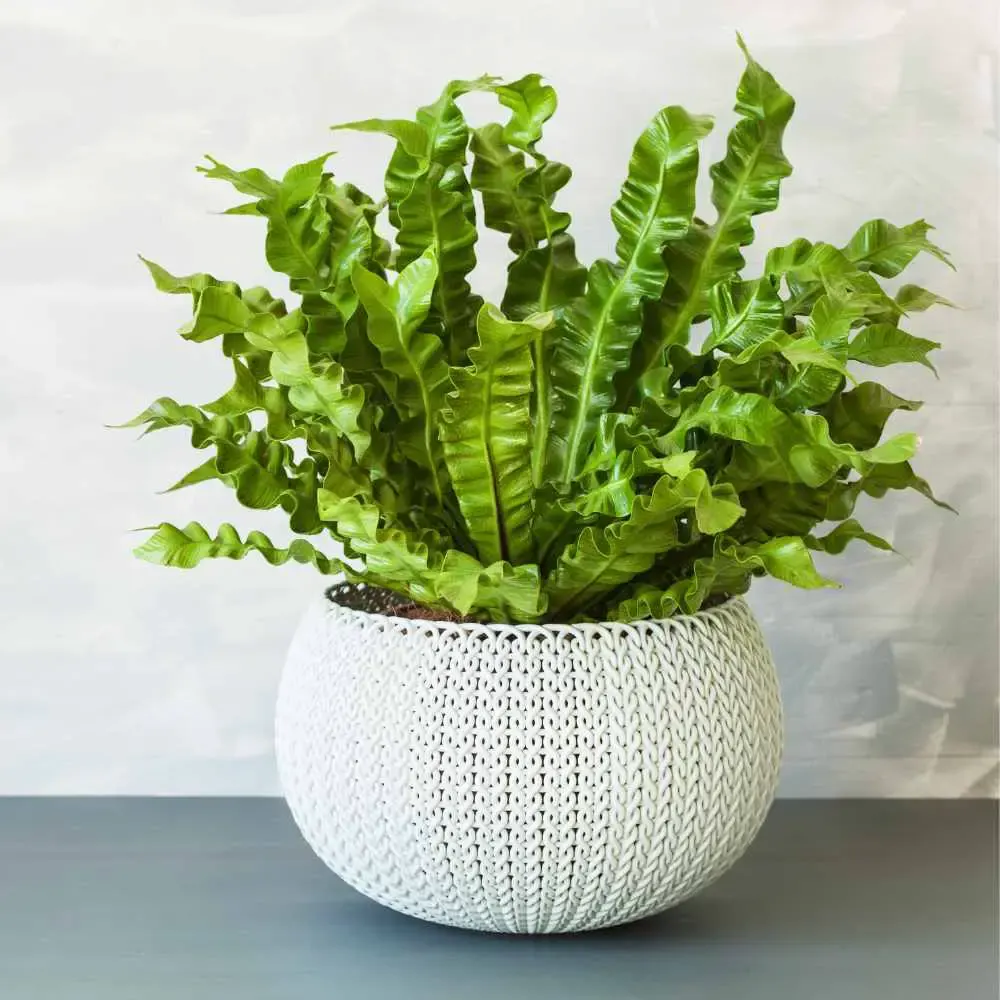
Growing Birds Nest Fern Outdoors:
Bird Nest Fern is native to tropical and subtropical regions. So it will grow well outdoors if you live in USDA hardiness zones 9 to 11. This fern thrives in areas with high humidity and mild temperatures. If you live in a region with mild winters and consistently high humidity, it’s likely you can successfully grow Bird’s Nest Fern outdoors.
Other conditions to consider before planting your Birds nest fern in the ground:
- Light: While Bird’s Nest Ferns prefer bright, indirect light indoors, they often do well in dappled or filtered sunlight outdoors. Too much direct sun can scorch their fronds. Be sure they have some shade or protection from intense sunlight.
- Soil: Plant Bird’s Nest Ferns in well-draining soil that is rich in organic matter. They prefer soil that retains moisture but doesn’t become waterlogged.
- Watering: The fern’s soil needs to remain consistently moist but not waterlogged. Here is where a roomy pot with rich light friable soil may be preferable to a permanent ground planting. Watering cannot be ignored.
- Humidity: Outdoor conditions often provide higher humidity levels than indoor environments, which benefits Bird’s Nest Ferns. However, if you’re in an arid climate, you might need to provide additional humidity through methods like misting or placing a humidity tray nearby.
- Protection from Cold: Bird’s Nest Ferns are sensitive to cold temperatures and frost. If you live in an area with occasional cold snaps or frost, it’s important to provide protection to prevent damage to the fern.
- Container vs. Ground Planting: Depending on your climate, you might consider planting Bird’s Nest Ferns in containers. Container pots give you considerably more control over their outdoor conditions than a ground planting. Container planting also provides greater control over their growing medium and watering needs. Because pots can be moved they allow protection from extreme conditions.
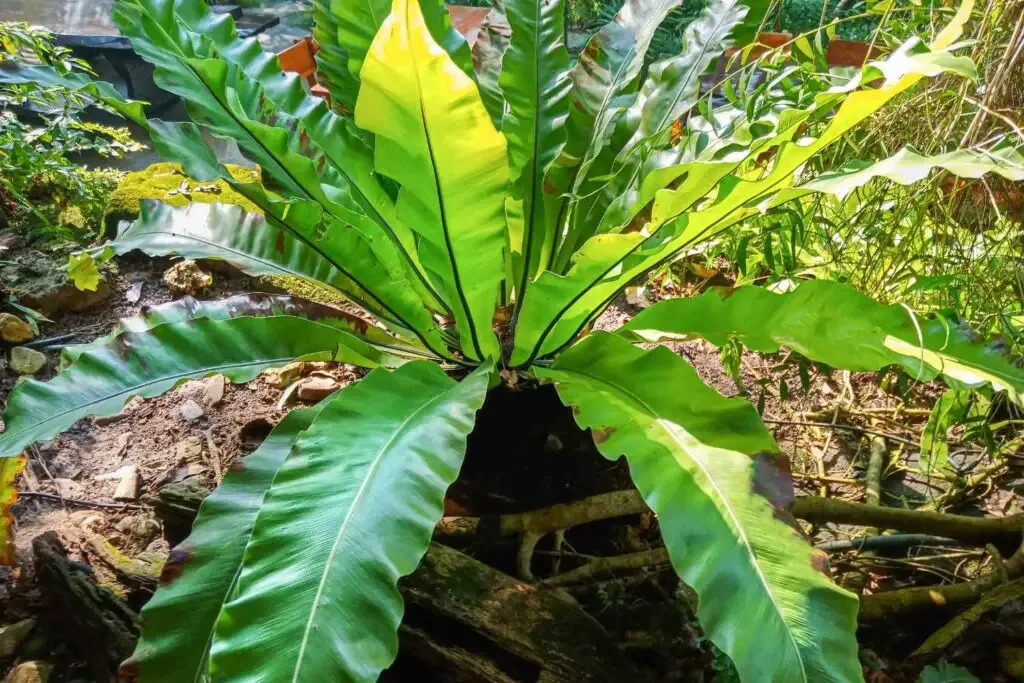
Varieties of Bird’s Nest Fern
There are several varieties and cultivars of the Bird’s Nest Fern (Asplenium nidus), each with its own unique characteristics and variations. These variations can include differences in frond shape, size, color, and texture. Here are a few notable varieties of the Bird’s Nest Fern:
- Asplenium nidus ‘Crispy Wave’: This popular cultivar is known for its deeply crinkled or wavy fronds, which give it a distinctive appearance.
- Asplenium nidus ‘Osaka’: This variety has fronds with an undulating or wavy edge, similar to ‘Crispy Wave’, but the undulations are even more pronounced.
- Asplenium nidus ‘Victoria’: This cultivar has smaller fronds that are densely packed, creating a lush and compact appearance.
- Asplenium nidus ‘Austral Gem’: This variety is known for its compact size and vibrant green fronds. It’s often favored for its suitability in smaller spaces.
- Asplenium nidus ‘Flamenco’: ‘Flamenco’ is characterized by its ruffled and curly fronds, which add a unique texture to the fern.
- Asplenium nidus ‘Curly Locks’: As the name suggests, this cultivar features fronds with distinct, curly edges, creating an interesting visual effect.
- Asplenium nidus ‘Victoria Queen’: This variety is similar to ‘Victoria’ but has slightly larger fronds and a more robust growth habit.
- Asplenium nidus ‘Safari’: ‘Safari’ is known for its deeply cut fronds that give it a feathery appearance.
Sourcing Bird’s Nest Ferns
The availability of these varieties may vary depending on your location and the nurseries or suppliers in your area. When selecting a Bird’s Nest Fern variety, consider factors such as the size of your indoor space, the lighting conditions, and your care preferences. Keep in mind that proper care and suitable growing conditions are essential for the health and vitality of any variety of Bird’s Nest Fern.
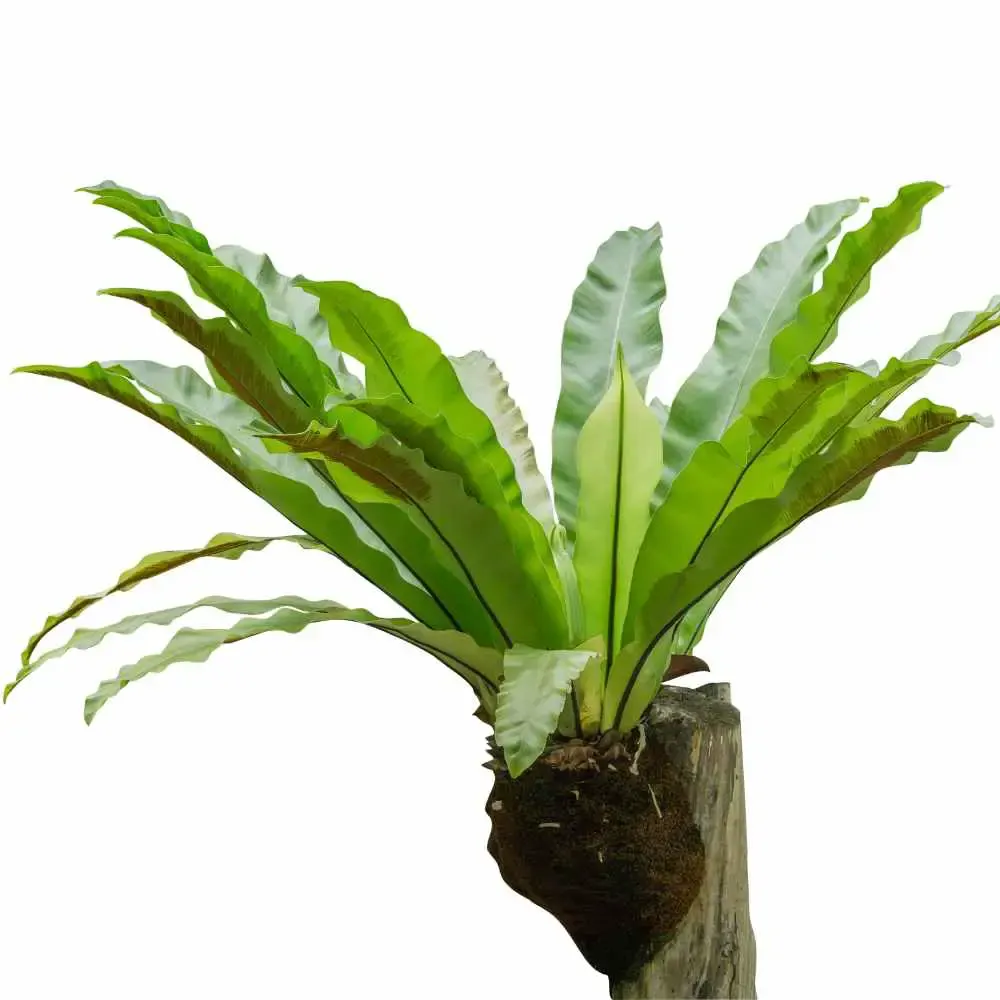
Indoor Bird’s Nest Fern Care Guide:
The bird nest fern grows well in most indoor environments. Just follow this guide to keep your fern in good health.
| Care Aspect | Details and Tips |
|---|---|
| Light | Bright, indirect light; avoid direct sunlight. |
| Temperature | Average room temperatures, 60-75°F (15-24°C). |
| Humidity | High humidity; mist regularly or use a humidity tray. |
| Watering | Keep soil consistently moist, but not waterlogged. Soaked soil that holds water around the plants roots will cause root rot. |
| Soil | Well-draining potting mix, rich in organic matter. |
| Container | Choose a pot with good drainage holes. |
| Fertilizing | Use a balanced liquid fertilizer every 2-4 weeks in spring and summer. Reduce frequency in fall and winter. |
| Pruning | Remove brown or damaged fronds at the base. |
| Propagation | Can be divided when mature or grown from spores (advanced technique). |
| Repotting | Repot every 2-3 years or when root-bound. |
| Pests and Diseases | Watch for pests like mealybugs; inspect regularly and follow the tips in this post to eradicate them.. |
| Special Considerations | Avoid cold drafts and sudden temperature changes. Provide good air circulation. |
These are general care guidelines that apply to a wide range of conditions. However, since your unique conditions may vary, keep an eye on your plant’s needs and health, and adjust care accordingly. Once you learn you’re when your plant is healthy and growing as it should, it will help you nip problems in the bud.

Related Content:
Trouble Shooting Guides:
Here are some of our most sought after guides on trouble shooting problems in plants. For ALL of our guides on plant problems go here. We hope you find the help you need in these articles. please let us know if you have more questions!
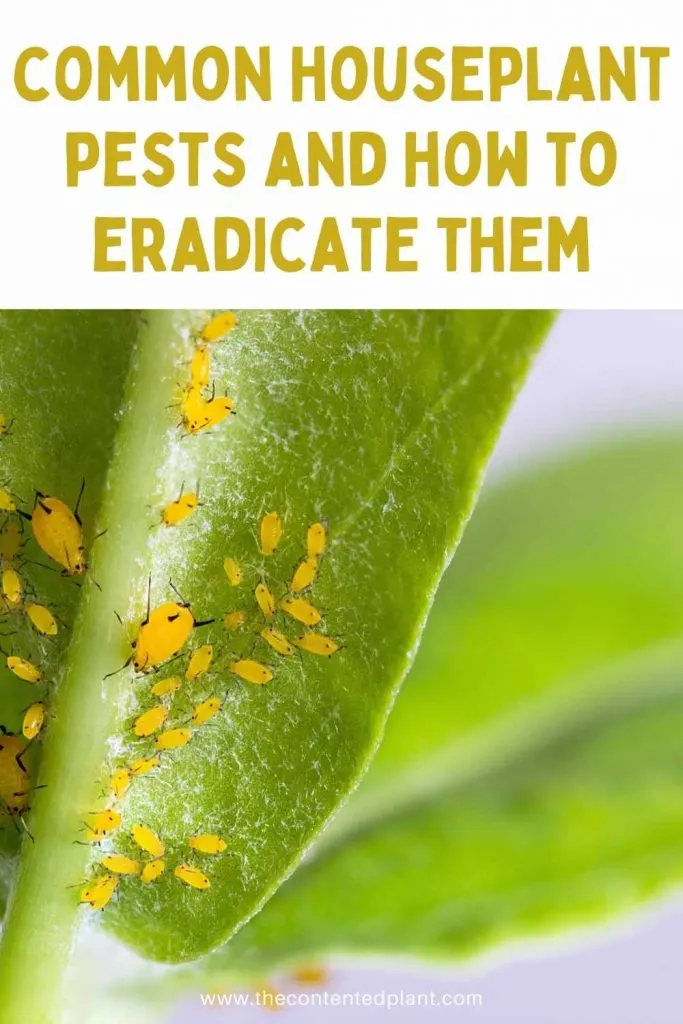
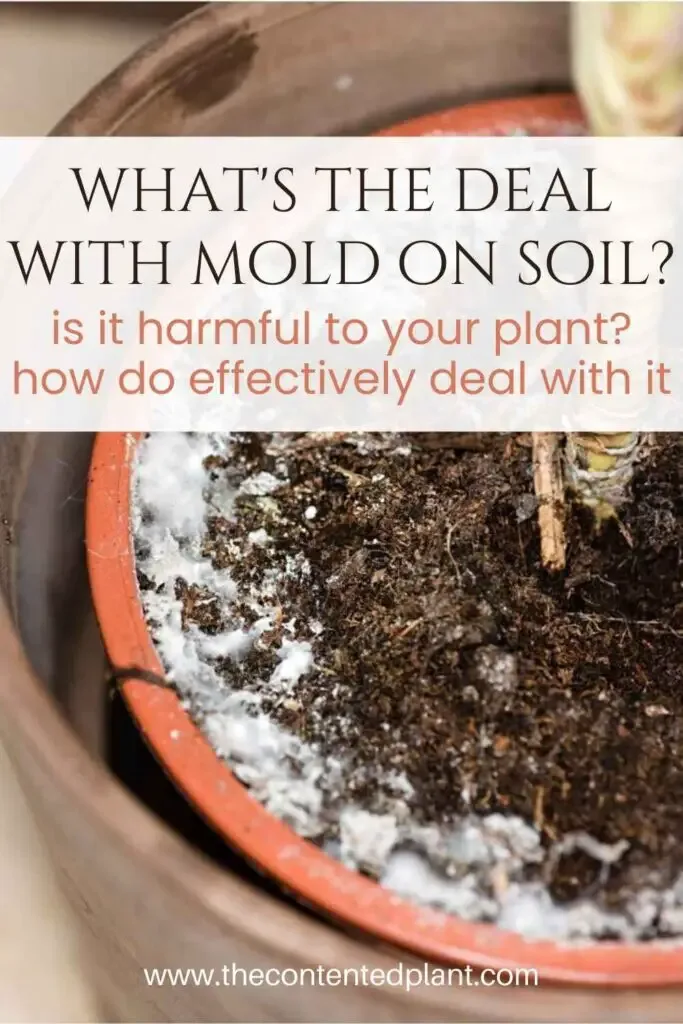

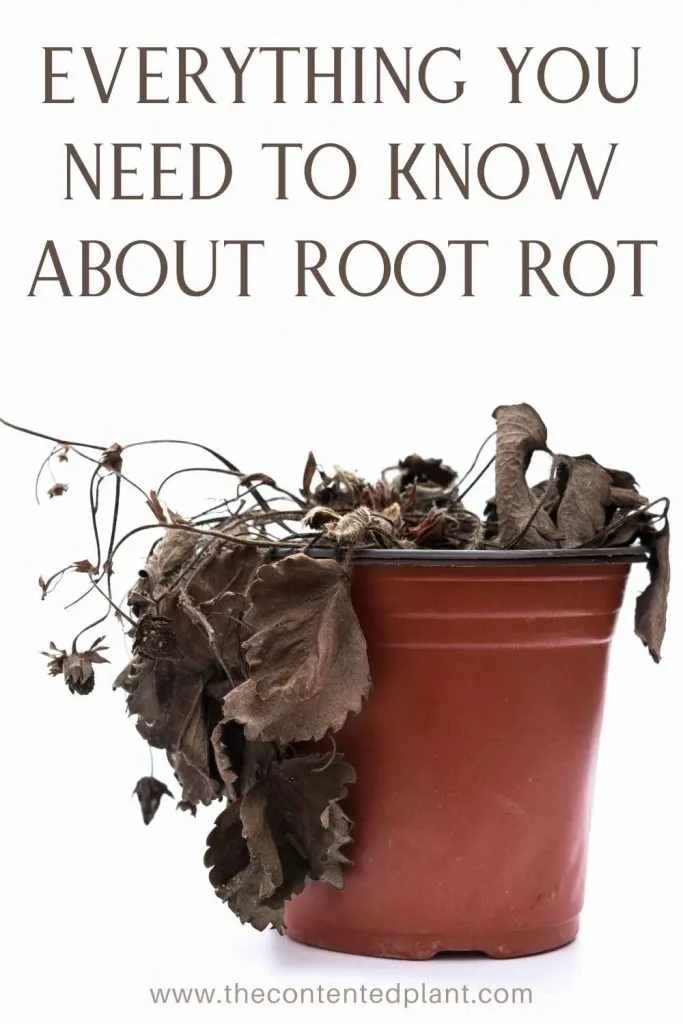
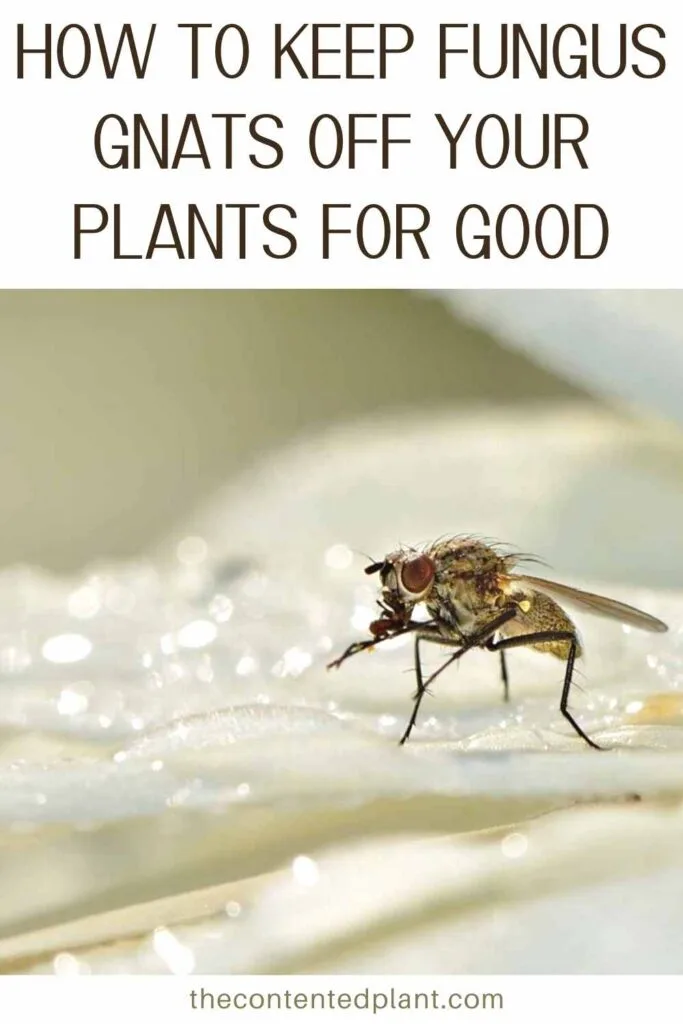
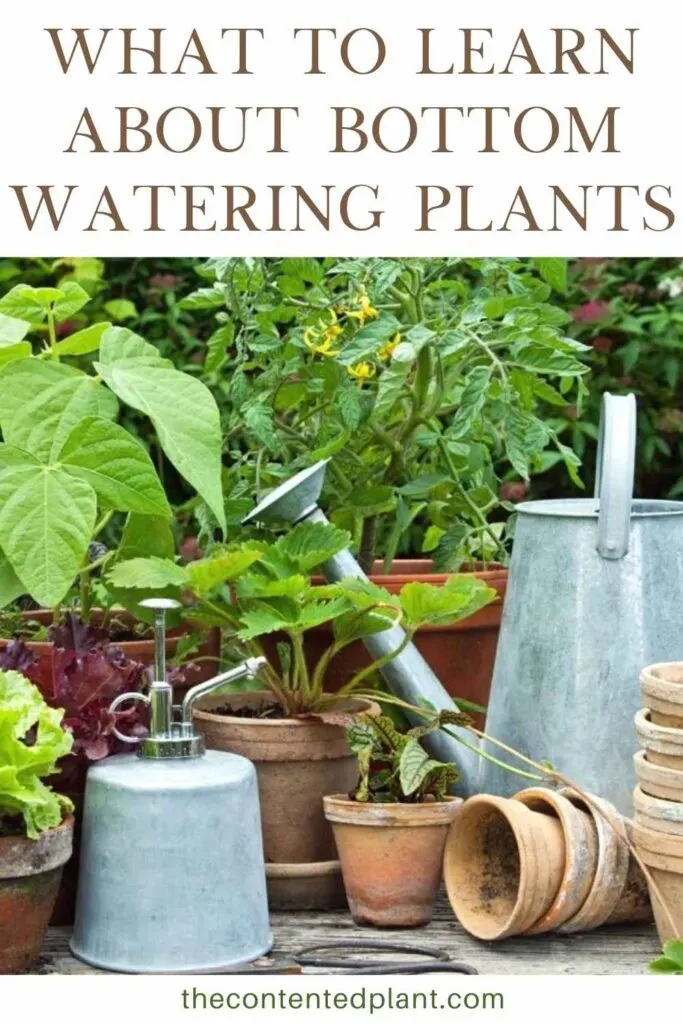
Follow Us:
Find us on YouTube, Instagram , Pinterest and TikTok! We love to Plant chat. We also comment, like and occasionally share your content to our daily stories. We’d love to see your plants. Share your joy in your houseplants. Happy Planting!


Japanese Painted Fern Care - The Contented Plant
Saturday 11th of November 2023
[…] Birds Nest Fern […]